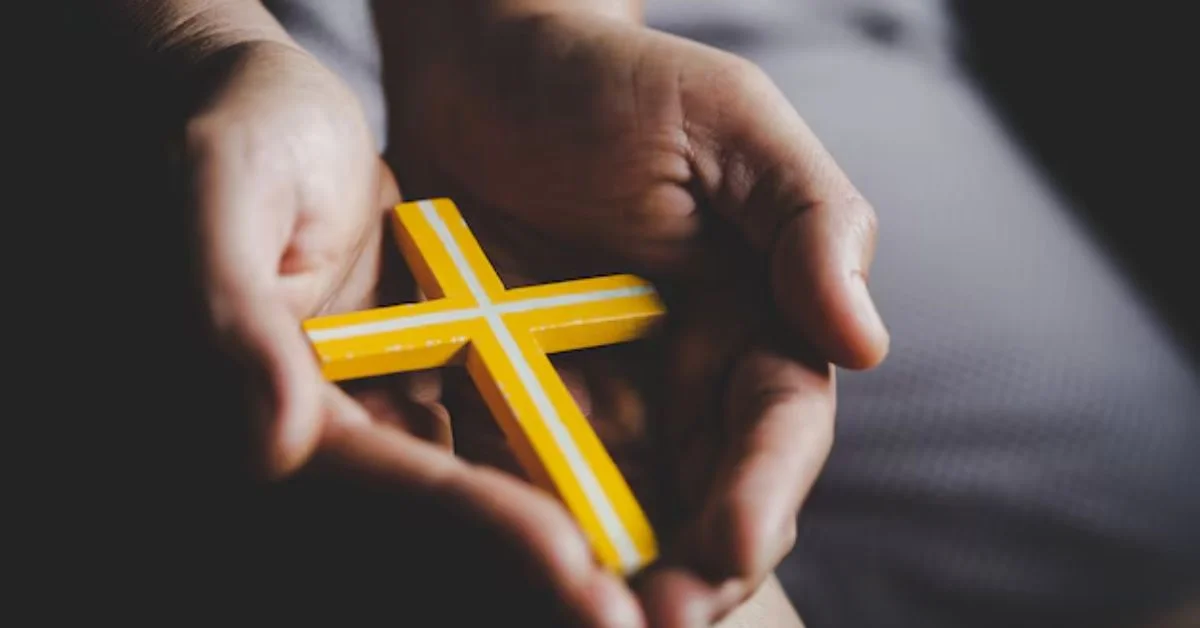The Jerusalem Cross is one of the most recognizable and historically significant Christian symbols. Distinguished by its unique design of a large central cross with four smaller crosses in each quadrant, it has been associated with the Crusades, the Kingdom of Jerusalem, and various Christian organizations. But beyond its historical roots, the Cross carries deep spiritual and symbolic meaning.
In this article, we will explore the origins, significance, and modern interpretations of the Jerusalem Cross, as well as its presence in religious and cultural contexts.
The Origins of the Jerusalem Cross
1. Historical Background
The Jerusalem Cross, also known as the Five-Fold Cross, dates back to the medieval period and is most commonly linked to the Crusader Kingdom of Jerusalem (1099–1291). It was used as the emblem of the Latin Kingdom of Jerusalem, which was established after the First Crusade.
King Godfrey of Bouillon, one of the leaders of the First Crusade, adopted this cross as the official symbol of the new Christian kingdom. Over time, it became a representation of Christian rule in the Holy Land and was worn by knights, clergy, and pilgrims who sought to defend and visit the sacred sites.
2. Design and Structure
The unique design of the Jerusalem Cross consists of:
- A large central cross symbolizing Christ and His teachings.
- Four smaller crosses, positioned in each quadrant, which can symbolize the four Gospels (Matthew, Mark, Luke, and John) or the four corners of the world to which Christianity spread.
- Some interpretations also suggest that the five crosses together represent the five wounds of Christ (the hands, feet, and side wounds from the Crucifixion).
Symbolism and Meaning
1. Religious and Spiritual Significance
The Cross carries multiple layers of Christian symbolism:
- Spreading the Gospel – The four smaller crosses represent the mission of Christians to spread Jesus’ teachings to the four corners of the world.
- Unity of Faith – It symbolizes the connection between the Old and New Testaments, Jewish and Christian traditions, and Eastern and Western Christianity.
- Christ’s Sacrifice – The five crosses together reference the wounds of Jesus during the Crucifixion, serving as a reminder of His sacrifice.
2. Use in the Crusades
During the Crusades, the Jerusalem Cross became synonymous with the Holy War fought by Christian knights to reclaim the Holy Land. It was often seen on banners, shields, and armor, signifying their allegiance to Christianity and their mission to protect Christian territories in Jerusalem and beyond.
3. The Cross in Modern Christianity
Today, the Jerusalem Cross remains a powerful religious emblem. It is often worn as jewelry, displayed in churches, and used by Christian organizations, including the Franciscan Order, which maintains Christian sites in the Holy Land.
Many modern-day pilgrims visiting Jerusalem purchase the Jerusalem Cross as a spiritual keepsake, symbolizing their connection to the Holy Land.
Variations and Interpretations
Over the centuries, the Jerusalem Cross has been adapted into different variations and styles:
- Gold and Silver Crosses – Used in jewelry to represent faith and commitment.
- Engraved in Church Walls – Found in religious sites, symbolizing the Christian heritage of a region.
- Military and Knight Orders – Some Christian knightly orders and military groups still use the cross in their insignias.
The Jerusalem Cross in Different Christian Denominations
While primarily associated with Catholicism, the Jerusalem Cross is also respected by Orthodox Christians, Anglicans, and Protestants. It serves as a symbol of faith, missionary work, and Christian unity across different denominations.
Conclusion
The Jerusalem Cross is more than just a historical emblem—it is a profound symbol of faith, sacrifice, and the enduring mission of Christianity. Whether as a representation of the Crusader Kingdom, a missionary symbol, or a cherished Christian keepsake, its legacy continues to inspire believers worldwide.
Frequently Asked Questions (FAQs)
1. What does the Jerusalem Cross symbolize?
The Cross represents the spread of Christianity to the four corners of the world, the five wounds of Christ, and the unity of faith.
2. Who used the Jerusalem Cross first?
It was first adopted by the Crusaders in the 11th century, particularly under the Kingdom of Jerusalem.
3. Is the Jerusalem Cross only for Catholics?
No, it is widely recognized across various Christian denominations, including Orthodox, Anglican, and Protestant churches.
4. Can I wear a Jerusalem Cross as jewelry?
Yes, many people wear the Jerusalem Cross as a pendant or ring to express their faith and connection to Christian heritage.
5. Where can I find the Jerusalem Cross today?
It is commonly found in churches, religious artifacts, Christian pilgrimage sites, and as jewelry or decorative items in Christian households.









